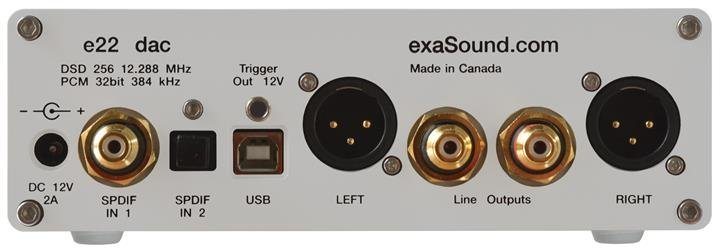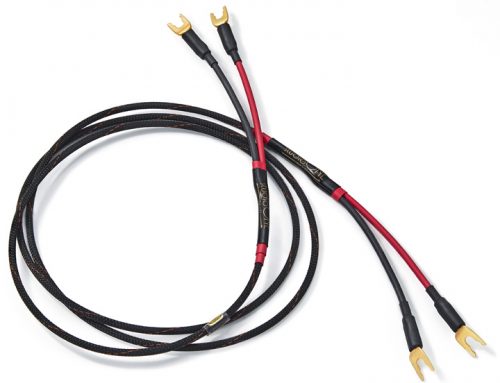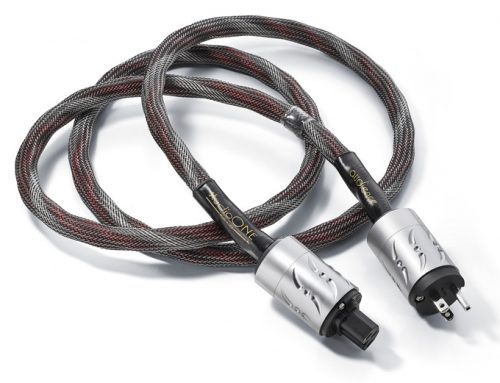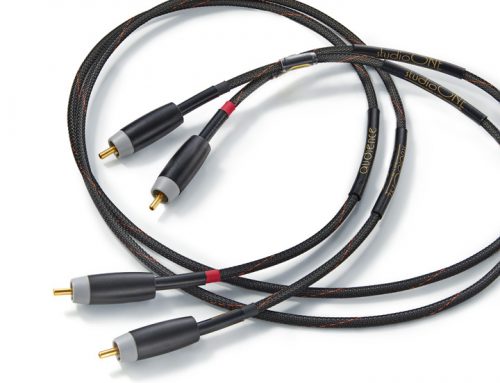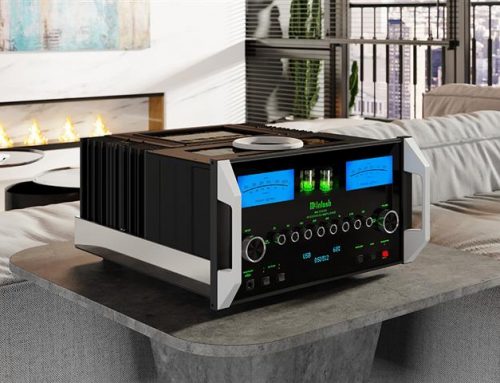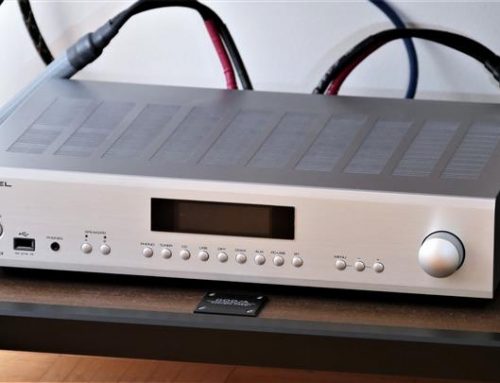I inserted the e22 DAC into my system, between the PC and the Simaudio i-5 integrated amplifier, connecting them with the Nordost Red Dawn LS unbalanced cables. Cardas Clear Light cables connected the amplifier to my beloved Bryston Middle T loudspeakers.
The e22 is a special piece of equipment. It offers a level of realism with a palpable presence of musicians and air within the recording space. It is able to produce that air between vocals and instruments because, to my ears, distortion and noise floor are seemingly non-existent.
Just to make things clear, before I get started on file types – the most limiting factor in music playback (other than the audio components) is the quality of the original recording. Some mp3’s sound great, and some high resolution files sound awful. It is not purely about the file type or bitrate. All things being equal, there is unquestionably more musical detail captured if an album is recorded in a higher resolution format, and from there it’s all about how much of that detail your audio components can reveal.
In the case of exaSound’s e22, this DAC is capable of revealing a tremendous amount of detail. exaSound has done a remarkable job of getting out of the way of the original recording, giving you all the detail that the chosen file has to offer. One of my favorite demos for music-curious friends was to play the same song in different file types. I usually played Norah Jones’ “I’ve Got To See You Again”, partly because I have it in five file types – from mp3 to DSD – and partly because the DSD version of the track blew me away. One measure of a system’s transparency is the clarity of a cymbal’s decay. Normally a cymbal quickly gets absorbed into the rest of the music, if it hangs around at all, but through the e22 on the DSD version of “I’ve Got To See You Again”, for the first time ever I heard the fuzziness of a cymbal decay all the way until it finished ringing.
Of course, the vast majority of what everyone listens to, including myself, is PCM based, so that is still largely the basis of my opinion, but DSD files are one of those things that are hard to go backwards from. After spending some time with the e22 and playing DSD files, if you’re spending over $2,000 on a DAC, I highly recommended going with a DSD-capable model.
Like most listeners, the majority of my library is in CD quality (16-bit, 44.1 kHz files), and I’ll even admit to having some MP3 files because the songs are good, though I maintain that mp3 sound is pretty lifeless and etchy. There is an artist from Bristol, England called “Fink” who is a bluesy and soulful guy that sings emotionally raw songs. On his song “Trouble’s What You’re In”, the differences between the MP3 and the CD quality versions are substantial. At CD quality, suddenly you can hear the squeak of the bass drum’s pedal, and feel the attached mallet thud against the drum skin, the snare drum popping out of a silent background, and added dimension by hearing the echo within the room.
There’s a similar step up with high resolution files towards more lifelike sound. I listened to Lana Del Ray’s album “Ultraviolence” (downloaded from HDTracks) and could clearly hear the benefits of the 24 bit depth of this 44.1 kHz file. More bit depth means more dynamic range between soft and loud sounds. This resulted in the heavy bass-lines sounding rounder and fuller while the instruments became more believable. At the same time, it brought added expression to the complexity of Lana Del Ray’s pretty, yet sorrowful voice.
Using the e22, I was amazed at another big jump towards realism when listening to Acoustic Sounds’ DSD recording of Shelby Lynne’s “Just A Little Lovin’”. The texture of the instruments and the subtleties of Shelby’s voice were incredibly engaging. When the song starts, the dynamic range of the strike on the drums is shocking, as is the drum resonance that follows, each tone sounding precise. The electric bass player’s fingers slide smoothly from note to note, sounding clean and warm. Shelby’s voice enters with a surprising presence, floating with a halo of air around her voice, behind the middle of my speakers. It was the closest to real sound I’ve gotten out of my stereo.
I picked up an mp3 version of the same Shelby Lynne album, anticipating that it would sound awful in comparison to DSD, but it sounded great too; proving once again that it’s all about the original recording.
I heard a greater realism than ever before of the recordings’ soundstage with the e22 in my system. There is a sense of timing so precise that it took me a while to finely adjust the position of my Bryston Middle T speakers to sufficiently present the soundstage with its full glory. Once they were dialed in, all the aspects of my systems components were shinning like never before.
Across the whole frequency spectrum, listening to my music collection was refreshing, like peeling off the protective layer of film on a new electronic device. Bass was clean and articulate. The midrange was remarkably open and vocals were that extra bit convincing. The highs were fast and sparkly.
Headphone fans will be delighted to know that the e22 DAC is equipped with a headphone amplifier. Compared to the e20 DAC model, this one offers double the current output. The headphone section of this DAC had my AKG K550’s sounding better than ever. Based on my experience with stand-alone headphone amps, I approximate I’d have to spend several hundred dollars to exceed the performance of the e22’s built-in headphone amp. All of the characteristics of the DAC were apparent in terms of immense detail retrieval and black backgrounds. With 500 mA of peak current, this headphone amplifier should be sufficient to drive even planar headphones adequately.
exaSound’s e22 has power that seems to flow undetected through the circuit board and its quietly isolated components. The design found the right balance between immense detail retrieval, without leaning too far forward and sounding aggressive. I had great fun exploring every genre in my library from metal to acoustic solo violins, and it was a revelatory experience all the way through. The signal is so clean I can imagine the e22 meshing nicely into most systems.
I hope that DSD will become a more popular choice for recording music since hard drive space is no longer an issue. The magic of music sounding musical is in the harmonics, and capturing those also builds the sense of acoustic space and air, which leads to a truly engaging experience with the music as the artists meant it to be. exaSound’s e22 demonstrates how the highest quality recordings can bring us closer to the music than ever before.
exaSound Audio Design
www.exasound.com
(416) 273-2522
exaSound e22 DAC
Price: $3,499

